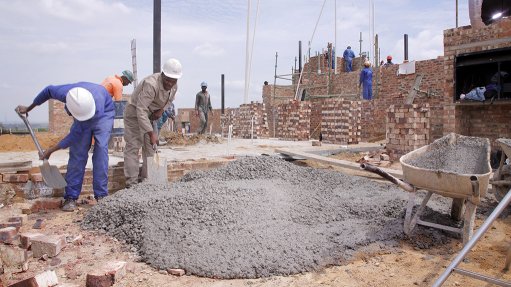New model for estimating risk proves effective in case studies



CASE STUDY Researchers at MIT showed how their gate decision analysis method works with a case study at producer of oil and natural gas BP, in Houston
Photo by Bloomberg
AUTOMOTIVE WORLD MIT worked with a US auto manufacturer on a decision about implementing a wireless device charging system in a new vehicle model
Photo by Bloomberg
Massachusetts-based business school MIT Sloan School of Management have presented new research about a new model that estimates risks and extends gate review analysis beyond “go” and “no go” options.
“Today, most technical development projects go through a phase-gate process, with each gate serving as a decision point to either proceed to the next phase of the project or cancel it. These are opportunities for managers to assess whether the product or system under development meets expectations and warrants additional investment,” says MIT Sloan School of Management’s Professor Steven Eppinger.
However, he notes that the reality is that many projects require more options at these decision points, such as implementing a back-up plan or delay. In a recent study on gate review decisions, Eppinger and his colleagues present a new decision model to better represent the reality of project gate options.
Using decision tree analysis, they show how organisations can estimate risk and the probability of success beyond “go” and “no go” options to make better gate decisions.
“The current literature doesn’t talk about these additional options, however it is very common to switch to a back-up plan, delay, or grant a waiver for a project when work is incomplete or there are still issues to be resolved at the time of the gate decision. Our model provides a tool for managers to analyse and assess risk with these options rather than relying on gut instinct,” he points out.
In the study, the researchers show how this gate decision analysis method works with a case study at oil and natural gas producer BP in Houston. The decision involved whether to move forward with building a new pipeline inspection tool, which had not completed a required operational environment test at a preliminary engineering gate review.
The options were to put the project on hold until the tool could pass the gate review, grant a waiver to continue working on the new design, or switch to the back-up plan of using existing tools.
“We used our model to consider the costs and probability of success with each option. This analysis method clearly showed that the company stood to gain the highest payoff with the waiver decision,” mentions Eppinger.
He points out that this model has also been applied in other industries. In healthcare, the researchers worked with a medical device company to analyse a decision about a new auto-injector product that was not working in its current design. Using the researchers’ analysis method, the company found that the development costs to implement any of several back-up plans were minimal compared to the potential payoff. Considering each plan’s probability of success, the company pivoted to an alternate design plan.
In the automotive industry, the researchers worked with a US auto manufacturer on a decision about implementing a wireless device charging system in a new vehicle model. At gate review, the project did not meet performance expectations so the company needed to decide whether to delay the vehicle launch to allow for the time needed to rework the wireless charging design, or launch the vehicle without the wireless charger. Looking at the probabilities of success as well as the costs, the company decided to launch the vehicle without the charger, and use the project learning for future vehicles.
“Ultimately, what is least understood in these decisions is the probability of success. This method gives managers a straightforward way to analyse and assess their confidence that a project will move forward in multiple scenarios and make important decisions for their organisations,” notes Eppinger.
Eppinger is coauthor of the paper “Assessment of Back-up Plan, Delay, and Waiver Options at Project Gate Reviews,” which will be published later this year in the twenty-first International Conference on Engineering Design, to be held in August at the University of British Columbia, Vancouver, Canada. His coauthors include MIT Engineering PhD candidate Alison Olechowski and Boston University’s Professor Nitin Joglekar.
Comments
Press Office
Announcements
What's On
Subscribe to improve your user experience...
Option 1 (equivalent of R125 a month):
Receive a weekly copy of Creamer Media's Engineering News & Mining Weekly magazine
(print copy for those in South Africa and e-magazine for those outside of South Africa)
Receive daily email newsletters
Access to full search results
Access archive of magazine back copies
Access to Projects in Progress
Access to ONE Research Report of your choice in PDF format
Option 2 (equivalent of R375 a month):
All benefits from Option 1
PLUS
Access to Creamer Media's Research Channel Africa for ALL Research Reports, in PDF format, on various industrial and mining sectors
including Electricity; Water; Energy Transition; Hydrogen; Roads, Rail and Ports; Coal; Gold; Platinum; Battery Metals; etc.
Already a subscriber?
Forgotten your password?
Receive weekly copy of Creamer Media's Engineering News & Mining Weekly magazine (print copy for those in South Africa and e-magazine for those outside of South Africa)
➕
Recieve daily email newsletters
➕
Access to full search results
➕
Access archive of magazine back copies
➕
Access to Projects in Progress
➕
Access to ONE Research Report of your choice in PDF format
RESEARCH CHANNEL AFRICA
R4500 (equivalent of R375 a month)
SUBSCRIBEAll benefits from Option 1
➕
Access to Creamer Media's Research Channel Africa for ALL Research Reports on various industrial and mining sectors, in PDF format, including on:
Electricity
➕
Water
➕
Energy Transition
➕
Hydrogen
➕
Roads, Rail and Ports
➕
Coal
➕
Gold
➕
Platinum
➕
Battery Metals
➕
etc.
Receive all benefits from Option 1 or Option 2 delivered to numerous people at your company
➕
Multiple User names and Passwords for simultaneous log-ins
➕
Intranet integration access to all in your organisation



















